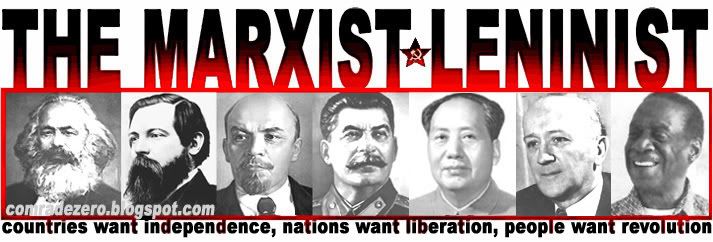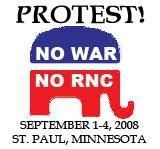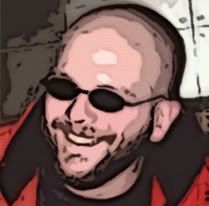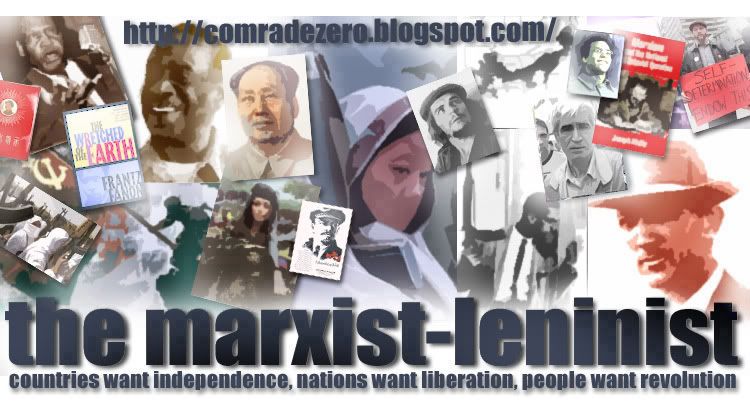Colombia: Mercenaries freed, FARC carries forward fight for liberation
Analysis by Tom Burke
The Bush Pentagon and State Department are crowing after a raid in which 15 prisoners of war, including three American mercenaries, were freed. What they are not telling you is that the Revolutionary Armed Forces of Colombia (FARC) were preparing to unilaterally release the prisoners in early July 2008.
The FARC moved the prisoners of war from three separate jungle camps to one location, planning to transfer them by helicopter and release them to French and Swiss government envoys. It was a simple plan that would have given the FARC a platform to demand freedom for 500 FARC fighters in Colombian prisons. For FARC negotiator Ricardo Palmera and rebel Sonia (Anayibe Rojas Valderrama), held as hostages in U.S. jails, the raid and the refusal of the U.S. and Colombian governments to negotiate is bad news.
 During its 44 years of fighting a guerrilla war in the countryside of Colombia, the FARC has unilaterally released prisoners a number of times, including seven months ago. These prisoner releases provide a rare opportunity for the FARC to present their political views and talk about pathways to social justice and peace in Colombia. At the prisoner release ceremonies, the FARC message sharply contrasts with the typical media distortions and censorship about them. In recent times, the U.S. strategy is to criminalize the FARC, to make it impossible for the FARC to negotiate with the Colombian government (or anyone else) and to deny the legitimate struggle of the peasants and workers.
During its 44 years of fighting a guerrilla war in the countryside of Colombia, the FARC has unilaterally released prisoners a number of times, including seven months ago. These prisoner releases provide a rare opportunity for the FARC to present their political views and talk about pathways to social justice and peace in Colombia. At the prisoner release ceremonies, the FARC message sharply contrasts with the typical media distortions and censorship about them. In recent times, the U.S. strategy is to criminalize the FARC, to make it impossible for the FARC to negotiate with the Colombian government (or anyone else) and to deny the legitimate struggle of the peasants and workers.The U.S. wants war without end. Bush wants victory, not prisoner exchanges and negotiations. The U.S. is frustrating all attempts at talks, while intensifying the war in Colombia. During his testimony in U.S. court, FARC negotiator Ricardo Palmera explained he was kidnapped by U.S. intelligence in Ecuador on his way to speak with a U.N. envoy three years ago. In January 2008, the FARC successfully released prisoners to Venezuelan President Hugo Chavez, but only after the U.S. and Colombian military spoiled the first attempt. In March this year, the U.S. was behind a high tech missile and bomb attack killing FARC Commander Raul Reyes and 24 others inside Ecuador. Raul Reyes was planning the next high profile prisoner release with ranking government officials from Ecuador, Venezuela and France. The U.S. tries to kill every effort.
The U.S. behavior is cold, hard and calculated. The U.S. is at war, no negotiations. The U.S. cannot stand for anyone to recognize the legitimacy of the FARC. The Bush officials were shaking with rage when Venezuelan President Hugo Chavez said the FARC should be granted international legitimacy known as ‘belligerency status.’ For the same reasons, the U.S. government was flabbergasted when U.S. prosecutors were forced to repeat Ricardo Palmera’s trials. Most of the American jurors believed Palmera over the U.S. government, leading to mistrials.
In the recent prisoner handover, the FARC were willing to release Colombian soldiers, the wealthy reactionary politician and French citizen named Ingrid Betancourt and three U.S. mercenaries. The three American military contractors were paid by Northrop Grumman to help kill Colombians. In the Washington D.C. trials of FARC leader Ricardo Palmera, it was revealed that Marc Gonzalves, Keith Stansell and Thomas Howes provided ‘real time’ information from their high-tech airplane to the Colombian military in its war against the peasant fighters of the FARC. This direct involvement by U.S. soldiers of fortune in Colombia’s civil war is risky business. It shows the calm restraint of the FARC that the three returned to the U.S. in such good shape.
However, soldier of fortune Marc Gonsalves spoke strong words against the Colombian revolutionaries who are fighting to free their country from U.S. domination and war. Like the patriot-for-pay that he is, Gonsalves defensively repeated again and again the big lie of the Bush administration, “the FARC are not revolutionaries.” Poor Marc Gonsalves - his big story of abuse involves his captors making him carry a heavy backpack in the jungle while marching tied together with other prisoners and under armed guard. Compared to the treatment the U.S. military gives prisoners of war at Guantanamo and Abu Ghraib, one would think Marc Gonsalves and the others might appreciate their good health and fair treatment in someone else’s country.
The effect of the prisoner raid is that the U.S. seized the media spotlight away from the FARC. The fact the FARC was already releasing the prisoners is swept clean from U.S. news stories. This pleases the Bush White House to no end. Bush has just boosted Colombian President Uribe out of a sticky situation where the Colombian Supreme Court was questioning the legitimacy of Uribe’s last election.
Despite Bush’s support, President Uribe’s regime is shaky due to his personal and political ties to narco-traffickers and corruption. An old U.S. intelligence report ties Uribe to the infamous cocaine trafficker Pablo Escobar. So does Escobar’s surviving girlfriend. No matter to the White House, Uribe is their man. Uribe’s rule consists of death squad terror for peasants, trade unionists, student activists and human rights defenders. In the countryside deadly chemical poison is sprayed on countless acres of land where FARC support is strongest, driving peasants off the land. Only Iraq has a bigger refugee crisis. Poor Colombians are forced into shantytowns around the big cities. Police and right-wing paramilitaries patrol the shantytowns in tandem. Repression is all around for working and low-income people.
For sections of the middle classes and the rich oligarchy in Colombia, the situation is one of combativeness as they mobilize to support Uribe and the violence of the Colombian state. The wealthy elite who rule Colombia and sell off its natural resources to U.S. corporations are perfectly willing to ignore the repression and the terror in the countryside. They are happy to have U.S. Southern Command conducting the war in their country, but they are careful not to speak too loudly about it. There are 800 U.S. military advisors, 600 military contractors, and scores of U.S. Special Forces on Colombian soil to direct the dirty war.
The rich people who rule Colombia are bathed in the blood of tens of thousands of peasants, workers and leftists. U.S. taxpayers foot the bill to the tune of $5 billion. The Bush administration fully backs the corrupt, narco-trafficking, death squad government of President Uribe. Without this, the wealthy few who rule Colombia with a bloody hand would be chased from power, never to return. The Uribe regime would collapse in months. Death squad democracy would be history, revolution a certainty.
Nevertheless, due to the recent blows against the FARC leadership, American imperialists, Colombian reactionaries and fools of all stripes want to claim the FARC are collapsing or are ‘finished.’ Others who should know better, because they know how it feels to be hunted by assassins, are suggesting that the FARC should one-sidedly ignore the history of Colombia and surrender their weapons. This is wishful thinking. In Colombia, laying down arms is akin to suicide.
For those who want social change in Colombia, the electoral road ends in the cemetery. The Colombian state murdered more than 4000 members, candidates and elected officials of the left-wing party, the Patriotic Union, in the late 1980s. In 1987, Patriotic Union political leader Ricardo Palmera went and joined the FARC, dedicating his own life to continuing the struggle. In his U.S. trials, Professor Palmera said, “My choices were death, exile, or joining the fight in the countryside.” In Colombia, those on the freedom road must carry arms if they are going to defend the people and reach their destination.
For sure, the FARC are reassessing their tactics in terms of releasing the small numbers of prisoners of war they still hold - mostly military officers. However, this is only one part of the FARC strategy. Mainly the FARC organize the masses of Colombian people to take control of their land, labor and lives to make revolution. It is slow, difficult, unglamorous work, but the FARC is a political organization and its strategy relies on the people. After 45 years of building the largest revolutionary army in the hemisphere, with tremendous growth during a period when much of the left was in retreat or capitulating to imperialism, the FARC is more political in its approach to making revolution than ever.
Millions of supporters of the FARC understand the long-term nature of the struggle for national liberation. The FARC is on a long march and expects to face both setbacks and advances. The goal is to wear down the Colombian state and its imperialist backers in the U.S. until conditions exist for the people to seize power. To the north, the American people do not like wars where Americans get killed, so the White House and Pentagon are limited in what they can do.
Plan Colombia is a U.S. war plan that brings poverty, misery and death to Colombians. In practice, Plan Colombia means more war, more repression and more drugs. Plan Colombia is the enemy of all people who want peace and justice. Like Bush and Uribe, the days of Plan Colombia are numbered. Plan Colombia cannot continue and the U.S. will soon need a new strategy or possibly go to war in Latin America.
The growing aggressiveness of the U.S. across Latin America is a sign of weakness, not strength. Bush and the U.S. empire are losing their grip. In Venezuela, Bolivia, and Ecuador, the people are rising and attempting to build new societies. The U.S. wants to put a stop to the people’s movements and reverse their gains. If the FARC leads a successful revolution in Colombia, it is game over for the U.S. empire in that region. Like Iraq in the Middle East, Colombia is key to the U.S. strategy for dominating Latin America.
We should do everything in our power to expose the Bush administration and its war in Colombia. That is our responsibility.
The four trials of FARC leader Ricardo Palmera in Washington D.C. went a long way to exposing the phoniness of the War On Terror and the War On Drugs. The U.S. empire, with millions of dollars, could not defeat a lone revolutionary held in solitary confinement and denied many of the constitutional rights Bush claims to defend. Palmera beat the slick U.S. prosecutors on nine out of ten charges and the U.S. was forced to drop all the false drug charges. Professor Palmera is a good and decent man. He chose to do what hundreds of thousands of other Colombians have done before him, to pick up a gun and defend what is right, what is good and what is just. Palmera stands for the poor, against the rich, despite his own background.
We too should stand with Palmera, Sonia and the 500 FARC prisoners held by the proto-fascist Uribe. We should stand with all the Colombian workers and peasants yearning to be free from U.S. corporate dominance and U.S. military death and destruction. The U.S. is on the wrong side of the civil war in Colombia. We need to demand that the U.S. government and military pull out and bring all the troops home now! Stop Plan Colombia!
Labels: armed struggle, Colombia, FARC, Fight Back, Latin America, national liberation, Ricardo Palmera
View Post
















